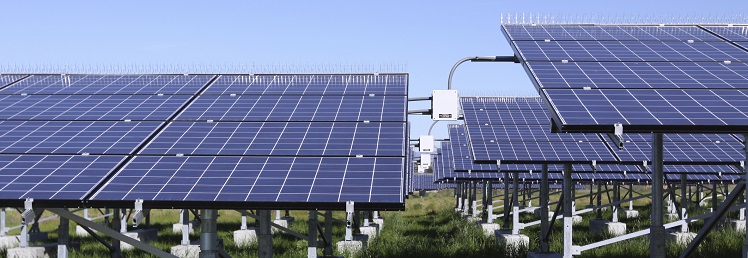Articles
3 Ways CFOs Can Help Reduce a Company’s Carbon Footprint
- By Vincent Manier
- Published: 9/28/2017

As CFO of an energy and sustainability company, I can say that I’ve been privileged to be part of a growing trend. Over the years, I’ve witnessed many finance peers leading their organizations toward a healthier future by taking action and proactively addressing climate change challenges.
Last November, I attended an event which brought together energy, facility and finance leaders across 75 organizations for the pure purpose of knowledge sharing. During the event, one of the common themes that kept surfacing was how much we as CFOs are counted on to be pillars and champions of our organization’s carbon reduction and overall sustainability strategies. But we know that a lot is involved when it comes to being that champion—especially in a landscape that seems to be continuously evolving.
We know that there is no easy path to reducing an organization’s carbon footprint. There is no one-size-fits-all approach to success. But over the years, there have been some solid best practices that have surfaced. Here are three ways finance leaders can take advantage of the demand for more sustainable business operations and navigate the regulatory changes on the horizon.
Put data to work.
As financial professionals, we rely on numbers to guide recommendations—and the same principle applies to putting energy numbers to work. Just like organizations today have quarterly financial reports and billing statements that indicate their financial performance, they also have data that reveals their energy performance. This data is found in utility bills, and, increasingly in reports from connected sensors and operating systems about equipment energy usage and performance from the plant floor to the corporate office. Utility bills can reveal fluctuations in electricity consumption, and connected machine or Internet of Things (IoT) data can reveal symptoms of a larger problem, such as alerts indicating that a warehouse door is continuously left ajar, causing the AC to expend extra energy to cool the facility.
Without the hard utility data, managers would be blindly implementing energy saving measures that might align with a company’s financial and sustainability goals, but have minimal impact. Either on their own or as a pair, utility and IoT data can be the backbone for first assessing current energy usage and environmental impact and then instituting company-wide goals to reduce carbon emissions.
Build new lines of communication.
Building a company energy-saving plan requires change and cooperation across many departments, including finance. As CFOs, we have a unique role here; we not only need to manage the financial risks of implementing energy-saving measures, but we also need to communicate those risks and rewards to internal stakeholders—starting with company leaders.
CFOs play a critical role in a carbon reduction campaign, particularly for global corporations, where there may not be a system in place for financial leaders to be briefed on every business action that would affect carbon emissions goals. A business development team, for example, might look to build a new facility to house a growing research team. That’s great news for the company as a whole, but unless there’s a line of communication from the business development team to the finance team, the financial benefits of adding energy-saving measure to the new facility might not be realized until it’s too late. Communicating from the beginning gives the CFO an opportunity to work energy-saving and energy–monitoring measures into any major business plan.
Pay attention to regulatory changes.
Employees and customers are demanding more sustainable business operations, forcing financial and business leaders to align their goals to see how they can adjust in a financially sustainable way. As financial leaders, our efforts support carbon-cutting goals, but we also recognize that we aren’t policy or energy experts. A few groups have recognized this need, and are sharing information to help businesses navigate policy changes. One of these groups, the Task Force on Climate-Related Disclosures (TCFD), focuses on disclosing climate-related risks to businesses.
Two additional groups, the Carbon Disclosure Project (CDP) and the We Mean Business Coalition, launched the Carbon Pricing Corridors initiative, which aims to define the carbon prices needed for large market players to meet the Paris Agreement. The group plans to release a report that’s focused on the power sector, and the range of carbon-related price signals needed through 2030. More than 1,000 forward-looking businesses have also adopted, or plan to adopt, a policy of voluntarily implementing an internal carbon tax, understanding an increasing demand for such initiatives from the public and from changing policy. Paying attention to the resources offered by these groups is a sure way to help organizations better anticipate what’s coming in energy regulation.
As CFOs, we are in a prime position to prompt change in our company’s sustainability initiatives. By putting data to work, building new lines of communication and paying attention to regulatory changes, we move closer to having the tools we need to influence the financial and environmental health of their organizations.
Vincent Manier is CFO of Ecova.
Copyright © 2024 Association for Financial Professionals, Inc.
All rights reserved.

